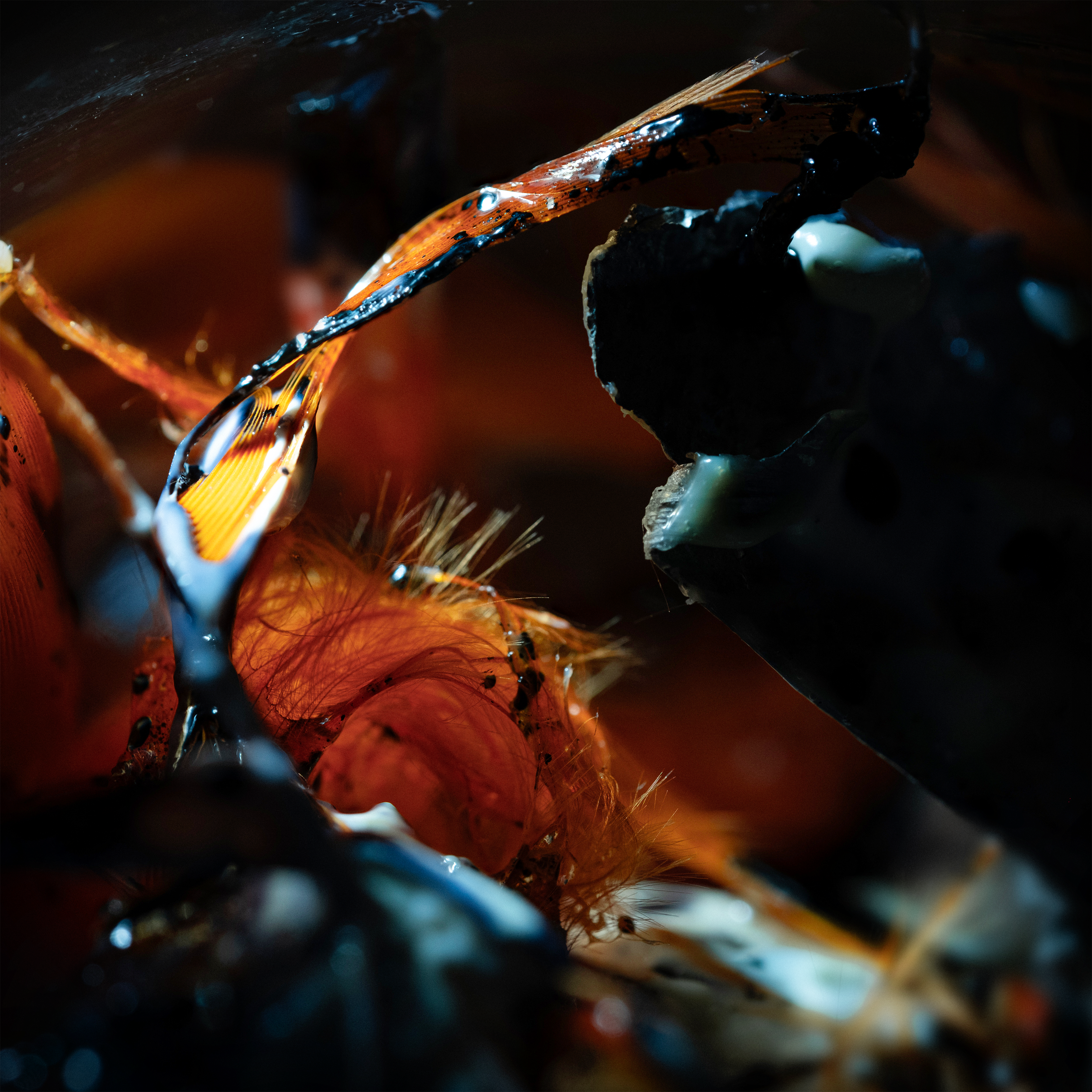
Poole – Ben Beinn
Out 14th August 2025 via Pentacle / Distributed by Rubadub
12” Vinyl / Tape / Digital
A hill repeating its own name.
Ben Beinn — mountain mountain — a recursive summit, a generative horizon.
Poole’s new album Ben Beinn follows 2024’s In a River Shadow, further exploring an electronic folkway rooted in the abstraction of the elemental. If the previous record moved with flowing water and submerged folk song, Ben Beinn climbs into elemental instability: passing storms, coded skies, and sodden ground.
Across the album, Poole creates a phantasmic Celtic New Age sound world that’s marked by microtonal harmony, and swelling dissonance. Voices in Gaelic, Norwegian, and English surface and dissolve, stretched beyond recognition — more weather than word.
The ten song cycle opens with 1000, bagpipes and strings emerge from mountain icicles and frozen streams. Leaf is the centre point, the skittering squelches of moss, mud and grass, form a slippery rhythmic kaleidoscope. The album closes with 365 Days of Rain, where rainfall data becomes a rhythmic lattice that slips from metrical order into converging motifs.
Recorded in Scotland between 2024–2025, Ben Beinn is a located listen, shaped by recordings of frozen hill passes, storms, and granite using contact mics and hydrophones. Rather than simply reflecting place, these recordings press against it — layering the sonic materiality of landscape with synthesis and song. An inflection point between fabrication — folk music as performed identity, a carrier of story — and its obfuscation through digital networks, where tradition is refracted into plural forms.
Reference points include the emotionally saturated textures of Inoyama Land and the folk-electronic hybrids of Eli Storbekken. There’s a tuning of biophony with the hyperrealist processes of Noah Creshevsky, owing as much to Galen Tipton’s adventures than the disquieting sonic simulations of James Ferraro.
Ben Beinn continues Poole’s excavation of environmental and folk material through contemporary methods. Shaped by the slow pressures of land and sky — a music of erosion, recurrence, and elemental presence.

A flowing and fluctuating record of the waterways, In a River Shadow explores the meeting points of deep time and song-time. Traditional sonic forms are refracted through hypermodern processes, with early instruments, environmental recordings, and synthetic textures acting as conduits. The result is a kind of technoid folk, where the long memory of place seeps into the immediacy of sound.
I made bone flutes and bullroarers based on designs sourced from prehistoric sites across the Highlands and Isles, sounding them in situ — in caves, by tidal estuaries, on moorland paths — producing tones shaped as much by water and terrain as by hand.
These raw materials are folded into a hyperreal soundworld shaped as much by terrain as by machine. AI lyric processes trained on Scottish song archives (developed in collaboration with Considerate Digital) intersect with open-ended compositional strategies drawn from experimental electronic practice. The result is a kind of speculative folkway futurism — where songs emerge through entanglements of signal, memory, and place; where melody drifts, guided as much by loch and river as by voice or hand.
On tracks like Birdhouse, voices appear in multiples — some human, some hallucinatory — like a dissonant guide trained on the hyperrealist work of Noah Creshevsky. While Star of the Sea reinterprets a Catholic hymn, turning the sea-bound devotional into its visceral drum shadow.
In a River Shadow is not a reconstruction, but a speculative transmission: where tradition, environment, and computation distil into a haunted, digital folklore.
“Mindbending and caressing ambient-psychedelic-noise contortionism” – Boomkat